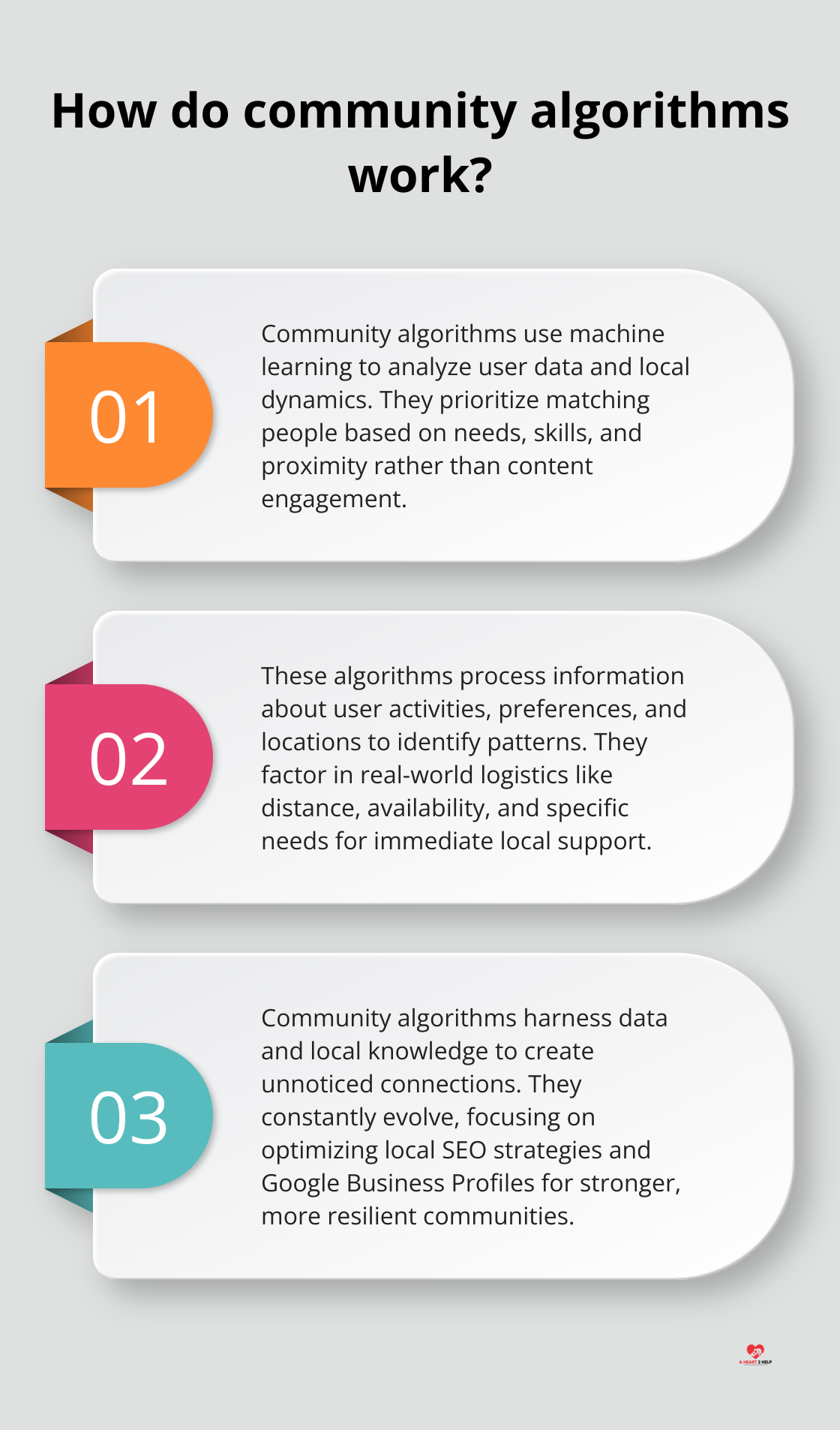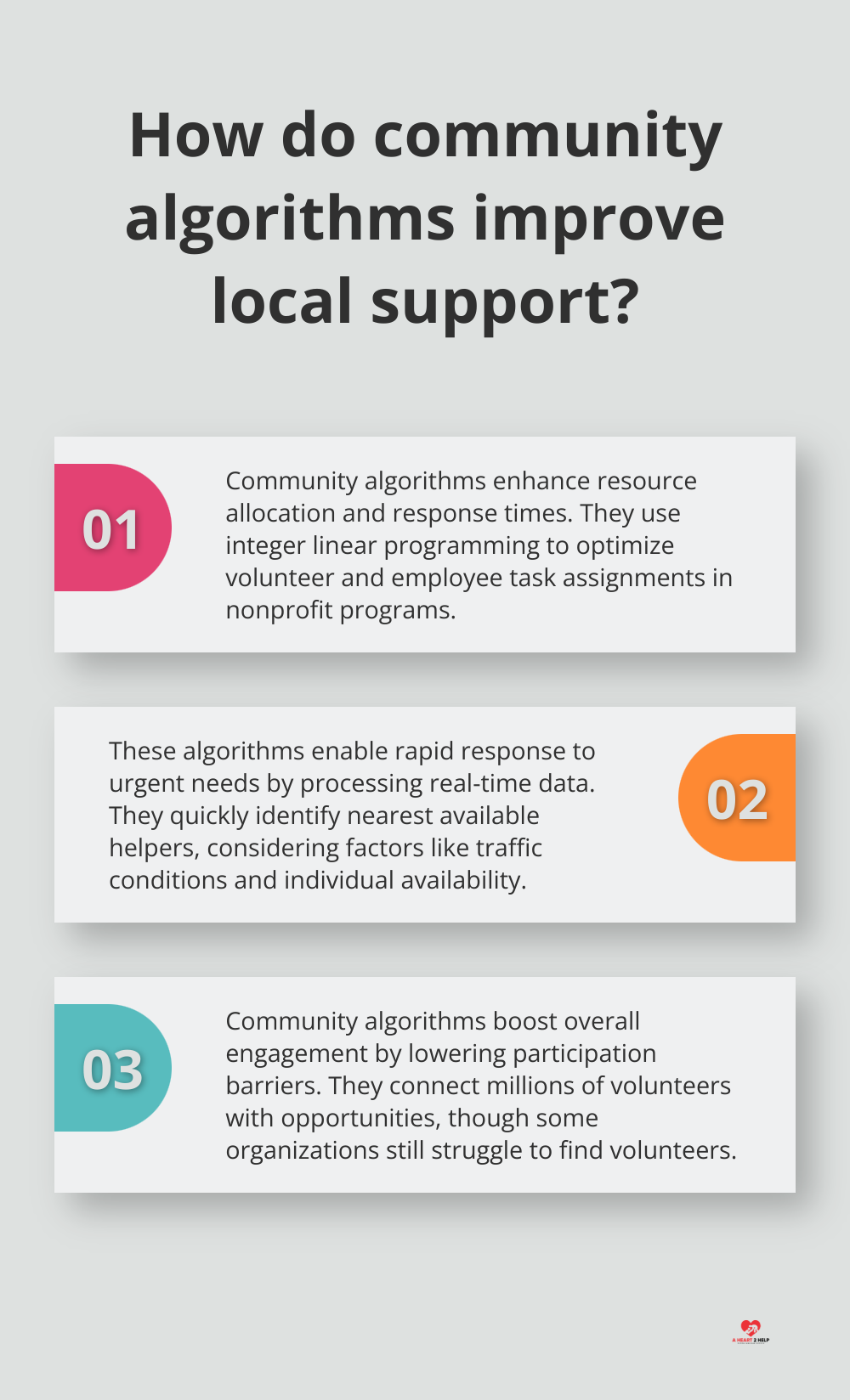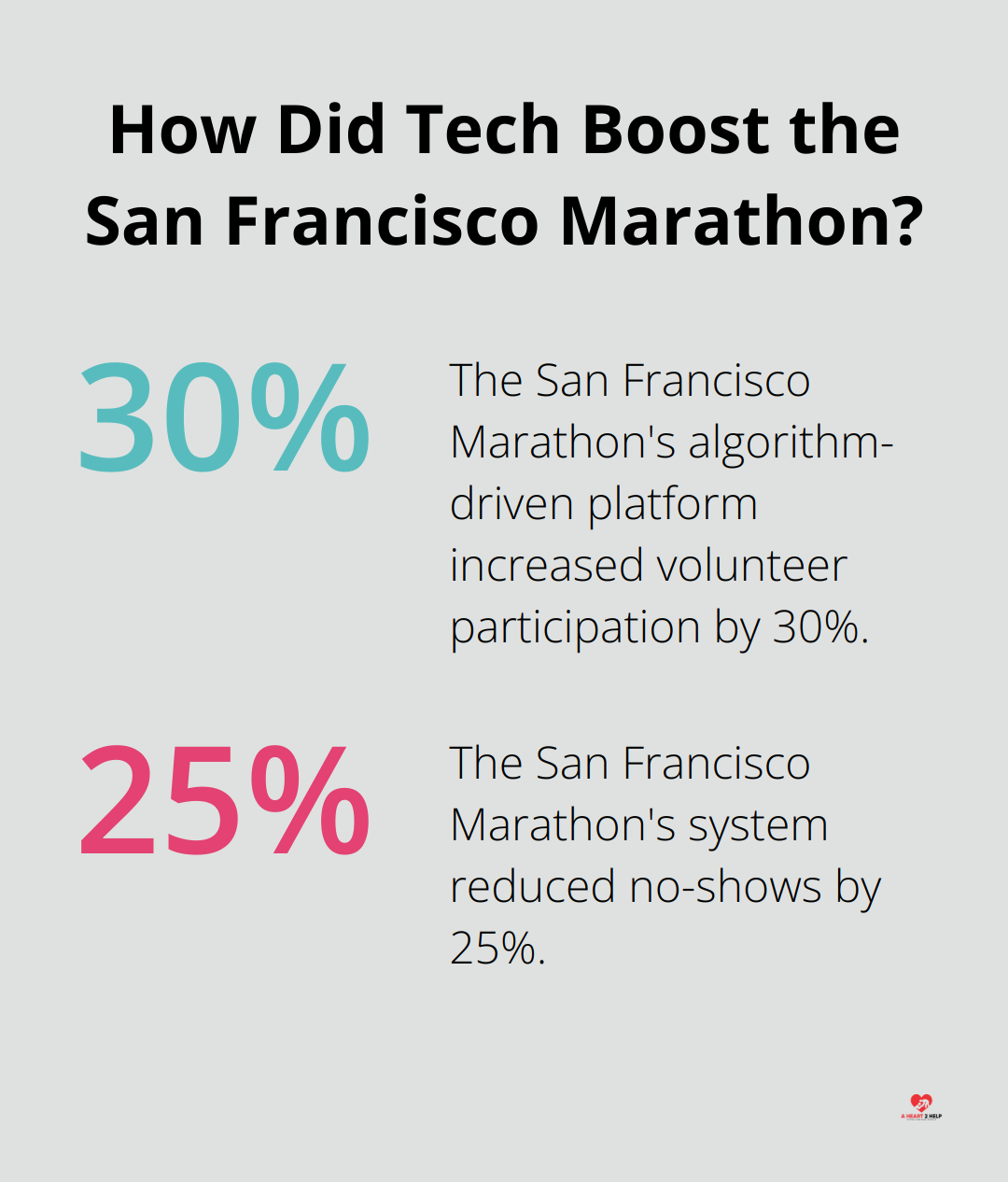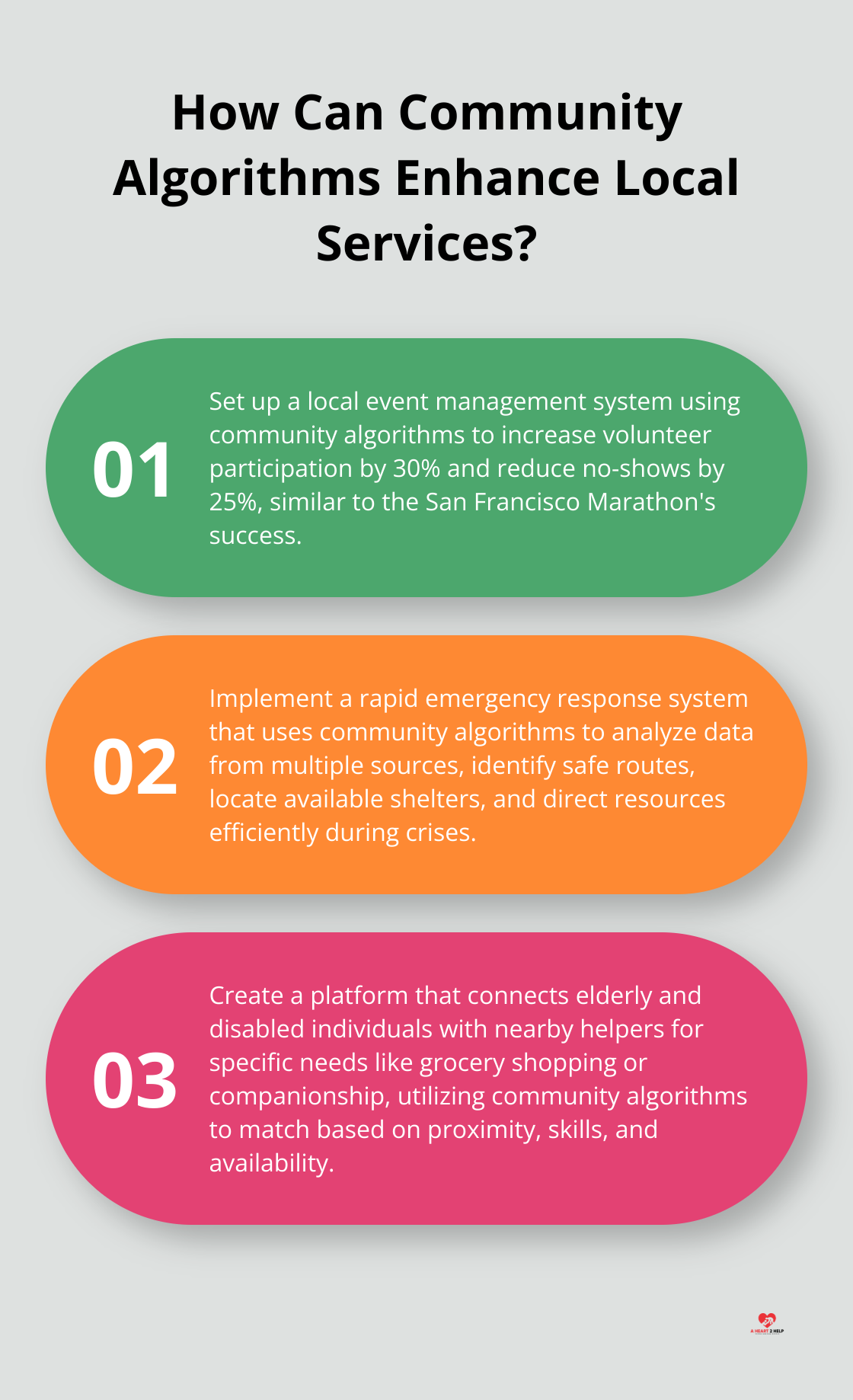Community algorithms are transforming the way we connect and support each other locally. These innovative tools go beyond traditional social networking to match needs with resources more effectively.
At A Heart 2 Help, we’ve seen firsthand how community algorithms can speed up response times for urgent requests and boost engagement. In this post, we’ll explore how these powerful tools are revolutionizing local support networks and creating stronger, more resilient communities.
What Are Community Algorithms?
The Foundation of Modern Local Support Networks
Google’s algorithms are complex mechanisms used to retrieve information from its search index and present the information to a given query. These sophisticated systems analyze data from users, their interactions, and their surroundings to create meaningful connections within a community. Unlike traditional social networking algorithms that focus on content engagement and ad revenue, community algorithms prioritize matching people based on needs, skills, and proximity.
The Core Mechanics
At their heart, community algorithms use machine learning and data analysis to understand the dynamics of a local area. They process information about user activities, preferences, and locations to identify patterns and potential matches. For example, if someone often offers rides to medical appointments, the algorithm might suggest them as a volunteer driver for elderly neighbors.
Beyond Social Media Connections
While social media platforms connect people based on shared interests or mutual friends, community algorithms take a more practical approach. They factor in real-world logistics like distance, availability, and specific needs. This strategy leads to more immediate and tangible support within neighborhoods.
Key Components for Local Impact
Local search algorithms are constantly evolving, with recent updates focusing on optimizing Google Business Profiles and other local SEO strategies. These components work together to create a dynamic ecosystem of support. They don’t just connect people; they build stronger, more resilient communities one match at a time.
The Power of Data and Local Knowledge
Community algorithms harness the power of data and local knowledge to reshape how we think about and deliver support in our neighborhoods. They analyze vast amounts of information to create connections that might otherwise go unnoticed. This data-driven approach allows for more efficient and effective community support systems.

As we move forward, we’ll explore how these powerful algorithms translate into real-world impact, transforming the landscape of local support and community engagement.
How Community Algorithms Transform Local Support
Precision Matching of Needs and Resources
Community algorithms revolutionize local support networks by creating a more efficient and responsive system for those in need. These powerful tools reshape how communities interact and support one another, leading to significant improvements in resource allocation, response times, and overall community engagement.

Community algorithms excel at connecting people with the right resources at the right time. Research has introduced an integer linear program to make volunteer and employee task assignments for planned nonprofit programs, capturing the impact of various factors on task completion efficiency. This approach aims to improve the utilization of volunteers’ skills and the overall effectiveness of community support efforts.
Lightning-Fast Response to Urgent Needs
When emergencies strike, every second counts. Community algorithms process vast amounts of data in real-time, allowing for rapid response to urgent requests. These systems quickly identify the nearest available helpers, considering factors like traffic conditions and individual availability. This speed can make a significant difference in situations ranging from medical emergencies to natural disasters.
Boosting Community Participation
One of the most significant impacts of community algorithms is their ability to increase overall community engagement. These systems lower the barriers to participation by making it easier for people to find opportunities that match their interests and availability.
While online platforms have been connecting millions of volunteers with opportunities, many organizations were not finding any volunteers at all. This highlights the need for improved algorithms to better distribute volunteer resources across various organizations and initiatives.
Enhancing Resource Allocation
Community algorithms optimize resource allocation within local support networks. They analyze patterns of need and availability, ensuring that resources (both human and material) are distributed where they will have the most impact. This intelligent allocation prevents waste and maximizes the effectiveness of community support efforts.
Fostering Long-term Engagement
Beyond facilitating one-time connections, community algorithms play a key role in fostering long-term engagement. They track volunteer preferences, skills, and past experiences to suggest increasingly relevant opportunities over time. This personalized approach (which respects user privacy) leads to higher satisfaction rates and sustained participation in community support activities.
As we explore the real-world applications of these powerful tools, we’ll see how community algorithms are not just changing how we provide local support – they’re transforming the very fabric of our communities.
Community Algorithms in Action
Rapid Emergency Response
Community algorithms transform local support networks in tangible ways. Their real-world applications span various sectors, from emergency response to everyday assistance for vulnerable populations.

During crises, community algorithms excel. They analyze data from multiple sources to coordinate emergency responses effectively. For instance, during natural disasters, these systems identify safe routes, locate available shelters, and direct resources where they’re needed most. The American Red Cross has implemented a workforce management system that channels volunteer engagement in response to natural disasters.
Streamlining Local Event Management
Community algorithms revolutionize how local events are organized and staffed. They match volunteers with tasks based on skills, availability, and location, ensuring smooth operations. The San Francisco Marathon uses an algorithm-driven platform that increased volunteer participation by 30% and reduced no-shows by 25%. This system allows organizers to fill last-minute vacancies quickly and allocate resources more efficiently.
Supporting Vulnerable Populations
One of the most impactful applications is in assisting elderly and disabled individuals. Community algorithms connect these vulnerable groups with nearby helpers for various needs, from grocery shopping to companionship. A study investigated the research conducted on older adults’ loneliness and social isolation, and physical ICTs, namely robots.
Enhancing Daily Acts of Kindness
Community algorithms also facilitate everyday acts of kindness. They match people who need help with those who can provide it, considering factors like proximity, skills, and scheduling preferences. This approach leads to more successful matches and faster response times for urgent requests.
Future Potential
As community algorithms continue to evolve, their potential to strengthen local support networks grows. From improving emergency preparedness to fostering daily acts of kindness, these tools reshape how we care for one another in our communities. The future holds exciting possibilities for even more sophisticated and effective community support systems (powered by advanced AI and machine learning techniques).
Inventions like these are continuously transforming communities and driving positive change, shaping society and improving neighborhood well-being.
Final Thoughts
Community algorithms have revolutionized local support networks, transforming how we connect and care for one another. These powerful tools match needs with resources, speed up response times, and boost community engagement. The future of community algorithms promises even more sophisticated systems that will adapt to each community’s unique needs.

At A Heart 2 Help, we harness the power of these algorithms in our innovative care-app to connect compassionate individuals with those in need. We encourage you to get involved by volunteering your time, sharing your skills, or supporting a neighbor. The true power of community algorithms lies in the people who use them (and their willingness to participate).
As we look ahead, community algorithms will play an increasingly important role in shaping our local support networks. We can create a ripple effect of kindness that extends far beyond our immediate neighborhoods. The power to transform our communities rests in our hands – let’s use it wisely and compassionately.
